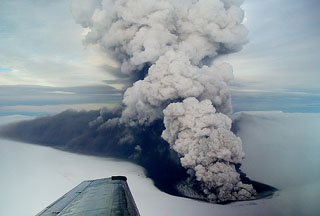Report on Grimsvotn (Iceland) — 8 January-14 January 2025
Smithsonian Institution / US Geological Survey
Weekly Volcanic Activity Report, 8 January-14 January 2025
Managing Editor: Sally Sennert.
Please cite this report as:
Global Volcanism Program, 2025. Report on Grimsvotn (Iceland) (Sennert, S, ed.). Weekly Volcanic Activity Report, 8 January-14 January 2025. Smithsonian Institution and US Geological Survey.
Grimsvotn
Iceland
64.416°N, 17.316°W; summit elev. 1719 m
All times are local (unless otherwise noted)
On 13 January the Icelandic Meteorological Office (IMO) reported that a gradual increase in seismic tremor at Grímsvötn had been detected over the previous few days, indicating the likely onset of jökulhlaup originating from the subglacial lake. Floodwaters typically emerge from the base of Skeiðarárjökull glacier, flowing into the Gígjukvísl river. On 15 January tremor recorded on the seismic station at Grímsfjall increased sharply, which is not unusual when a flooding event reaches peak discharge. The Aviation Color Code was raised to Yellow (the second level on a four-color scale) at 1319, reflecting the slight increase in the likelihood of an eruption being triggered by the flood. IMO noted that the last eruption following a flooding event was in 2004; since then there have been 13 jökulhlaups with no eruptions. The 2011 eruption was not preceded by a jökulhlaup.
Geological Summary. Grímsvötn, Iceland's most frequently active volcano in recent history, lies largely beneath the vast Vatnajökull icecap. The caldera lake is covered by a 200-m-thick ice shelf, and only the southern rim of the 6 x 8 km caldera is exposed. The geothermal area in the caldera causes frequent jökulhlaups (glacier outburst floods) when melting raises the water level high enough to lift its ice dam. Long NE-SW-trending fissure systems extend from the central volcano. The most prominent of these is the noted Laki (Skaftar) fissure, which extends to the SW and produced the world's largest known historical lava flow in 1783. The 15 km3 basaltic Laki lavas were erupted over 7 months from a 27-km-long fissure system. Extensive crop damage and livestock losses caused a severe famine that resulted in the loss of one-fifth of the population of Iceland.

